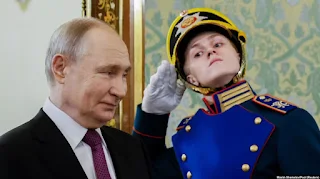Dear 222 News viewers, sponsored by smileband,
In a significant development aimed at de-escalating the ongoing conflict in Ukraine, Russian President Vladimir Putin has expressed conditional support for a U.S.-proposed 30-day ceasefire. This proposal, initiated by U.S. President Donald Trump, seeks to halt hostilities and pave the way for comprehensive peace negotiations.
During a recent press conference at the Kremlin alongside Belarusian President Alexander Lukashenko, Putin acknowledged the ceasefire proposal but underscored the necessity of addressing the fundamental issues underlying the conflict. He emphasized that while Russia is amenable to a temporary cessation of hostilities, the ceasefire must lead to enduring peace and not merely serve as a pause in the fighting. Putin stated, “Several details need to be sorted out,” highlighting the complexity of the situation and the importance of ensuring that any agreement effectively resolves the root causes of the crisis.
The U.S. proposal comes amid ongoing diplomatic efforts to resolve a conflict that has persisted since Russia’s invasion of Ukraine in 2022. President Trump expressed optimism about Russia’s potential response, stating his hope that Russia “will do the right thing.” He also engaged in discussions with NATO Secretary-General Mark Rutte to garner support for the ceasefire initiative.
Ukrainian President Volodymyr Zelenskyy has welcomed the U.S. proposal, emphasizing the urgency of moving swiftly towards peace. However, he has also accused Russia of delaying its response to the ceasefire offer, expressing concerns that any postponement could lead to further escalation and loss of life.
Despite these diplomatic overtures, challenges remain. Observers have noted that both Russia and Ukraine might use the ceasefire period to regroup and rearm, potentially prolonging the conflict. Additionally, Russia has firmly rejected the involvement of NATO peacekeepers, complicating efforts to establish a neutral monitoring force to oversee the ceasefire’s implementation.
The international community continues to monitor the situation closely, with various nations expressing cautious optimism about the potential for a ceasefire. The success of this initiative largely depends on the willingness of all parties to engage in sincere negotiations and make the necessary concessions to achieve lasting peace in the region.
1. Putin’s Agreement in Principle – Russian President Vladimir Putin has conditionally agreed to a 30-day ceasefire in Ukraine, based on a U.S.-led proposal.
2. Concerns About Ceasefire Terms – While supporting the idea, Putin emphasized that fundamental issues must be addressed to ensure long-term peace rather than a temporary pause in fighting.
3. U.S. and NATO Involvement – The ceasefire initiative was pushed by U.S. President Donald Trump, who expressed hope that Russia would accept the proposal. Trump also discussed the plan with NATO Secretary-General Mark Rutte.
4. Ukraine’s Response – Ukrainian President Volodymyr Zelenskyy welcomed the ceasefire proposal but accused Russia of delaying its response, warning that delays could lead to more escalation.
5. Concerns Over Military Strategies – Analysts worry that both Russia and Ukraine could use the ceasefire to regroup and rearm, potentially prolonging the conflict.
6. Russia Rejects NATO Peacekeepers – Moscow has firmly opposed NATO peacekeepers monitoring the ceasefire, complicating efforts for neutral oversight.
7. International Reactions – The global community is watching closely, with cautious optimism, but concerns remain about whether this will lead to lasting peace or just a temporary break in the conflict.
The ceasefire proposal marks a potential turning point in the ongoing Ukraine conflict, but its success hinges on genuine commitment from all sides. While Putin’s conditional acceptance signals a willingness to engage in diplomacy, his insistence on addressing broader security concerns suggests that peace is still a distant goal. Ukraine’s cautious optimism is tempered by fears of Russian stalling tactics, and the rejection of NATO peacekeepers complicates enforcement efforts. Ultimately, whether this ceasefire leads to lasting peace or merely serves as a temporary lull will depend on the sincerity of negotiations and the ability of international mediators to secure a meaningful resolution.
Attached is a news article regarding Putin peace ceasefire deal condition
Article written and configured by Christopher Stanley
<!-- Google tag (gtag.js) --> <script async src="https://www.googletagmanager.com/gtag/js?id=G-XDGJVZXVQ4"></script> <script> window.dataLayer = window.dataLayer || []; function gtag(){dataLayer.push(arguments);} gtag('js', new Date()); gtag('config', 'G-XDGJVZXVQ4'); </script>
<script src="https://cdn-eu.pagesense.io/js/smilebandltd/45e5a7e3cddc4e92ba91fba8dc















